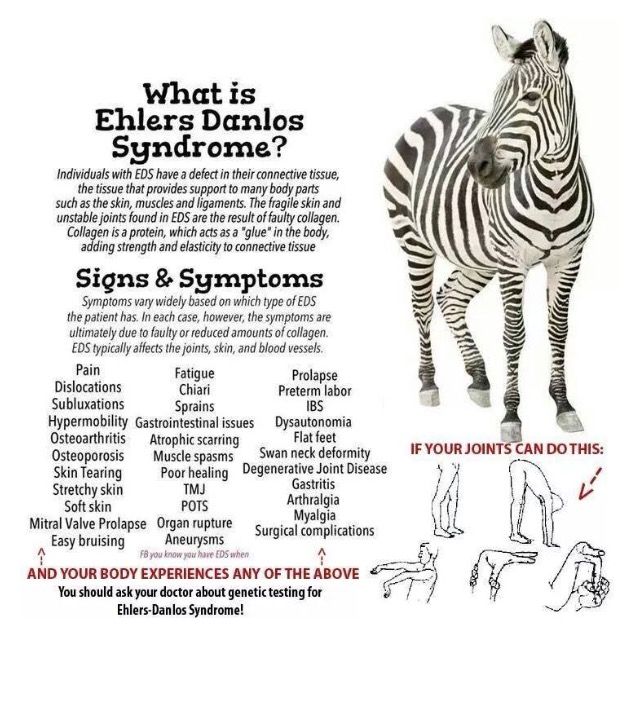
What is EDs? Ehlers-Danlos syndrome (EDS) refers to a group of hereditary collagen disorders affecting the connective tissue throughout the human body. This tissue provides the skin, muscles, blood vessels, bones and other internal organs with support
EDS is characterized by a number of joint-related complications ranging from slight to extremely severe and can lead to death if left untreated. These complications usually manifest during childhood or early adulthood. Most people who are affected by EDs will eventually develop another complication from the disease, but early diagnosis and treatment are particularly important. Some symptoms of EDS include:
- "Ehlers-Danlos" refers to the condition itself, and "hereditary collagen disorders" refers to the collection of symptoms that accompany EDs. Hypermobility refers to the condition where there is excessive movement of bones through joints. Hypermobility can also be referred to as bone malabsorption, and this occurs when the body absorbs too much calcium and other nutrients from the bones it contains. Movement, including both bending and stretching, can also be called hypermobility. The condition commonly results from an injury to the neck and shoulders that result in a loss of bone.
- People who suffer from EDS often experience difficulty in moving their joints, especially in cases of hypermobility. Hypermobility can also result from trauma, such as a fracture or dislocation. Hypermobility can be caused by a genetic disorder or environmental factors such as pollution or poor nutrition.
- EDS commonly results from poor blood circulation and the lack of proper nutrient absorption. Hypermobility and joint deformities often accompany poor circulation. Hypermobility results when blood flow is restricted in areas of the joint due to a weak cartilage. The lack of proper nutrient absorption results in the bones being unable to absorb nutrients needed for healthy functioning.
People with EDS usually experience an inability to maintain proper range of motion in their joints. In addition, they may experience pain, swelling, redness, and inflammation in the affected area. Joint pain can be caused by joint stiffness, arthritis, or rheumatoid arthritis. Rheumatoid arthritis is an autoimmune disease that occurs when the immune system attacks the body's own joints and cartilage.

Some people with EDS have a noticeable lump in the joint, known as atheromatous hyperplasia. Atheromatous hyperplasia is an accumulation of abnormal tissue in the joints, such as connective tissue in the joints. This can happen when there is an abnormal imbalance in connective tissue between the two bones.
- People with EDS may also experience a condition called xanthomas, or pain in the area of the joint where the joint connects to the bone. This is due to the inability of the joint to provide adequate blood supply to the affected area. Sometimes bone loss is the cause of this symptom. It is estimated that up to fifty percent of people with EDS have xanthomas.
- People with SED can also experience stiffness and pain in the neck, arms, legs, and back. These symptoms may be accompanied by a feeling of tenderness and burning or discomfort in the muscles or soft tissues surrounding the joint. The stiffness associated with this condition can make it difficult to walk or stand.
- People with EDS usually have trouble breathing and swallowing, as well as problems with bowel movements. These symptoms can lead to serious complications such as pneumonia, blood clotting, or bile duct obstruction. People with EDS may also experience difficulty maintaining bladder control, especially while urinating. and in the ability to eat due to the inability to empty the bladder on their own.
- People who are affected by EDS should seek treatment as soon as possible. In severe cases, treatment may include surgical intervention, physical therapy and other options that may help the condition.
- People who suffer from EDS can receive many treatments to improve their quality of life. These treatments can include exercises, diet modification and lifestyle changes, depending on their needs and diagnosis.